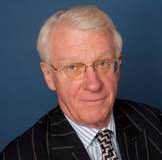Gold: Midyear Investment Review
During the first half of 2003, gold and gold shares consolidated their considerable gains of 2002. After running up to $390/oz. in anticipation of Gulf War II in early February, gold entered a sharp correction, which completed its course by the end of March. A rally off of those lows peaked in late May at $375/oz, and a second, milder correction completed in mid July. The shares and the metal appear poised to make new highs during the second half of this year.
Public and institutional interest in gold has languished in comparison to last year because of the revival in the stock market. Following this bear market rally, the S&P index now trades at a valuation premium of 50% greater than all previous bull market peaks other than 2000. In June, the ratio of insider sales to buys reached a six-year high. Perhaps the Fed's open spigot policy will create sufficient liquidity for this levitation to continue. Timing the downturn is more problematic than visualizing the outcome. A return to the primary bear market in equities is only a matter of time.
The double-digit stock market gains of the1980's and 1990's still dominate the collective memory of investors. This explains the prevalence of wishful thinking evident in the overvalued stock and bond markets. Perhaps escapism is necessary to preserve sanity. However, realism is a better route to preserve capital. Central banks and governments are racing to devalue paper currency. The devaluation campaign is a last-ditch attempt to extinguish the overhang of debt from the bubble days, a barrier to economic growth. Fantasies of a business upturn are the sole basis for stock market speculation. According to this script, the upturn will be powered by plentiful monetary and financial stimulus. However, as noted by Stephen Roach (Morgan Stanley economist), the US and world economies are not in a classic business cycle environment. America and the world are "in the midst of a post-bubble business cycle, where standard policy multipliers are largely dysfunctional."
In the 1990's, the collapse of the Nikkei was followed by three stock market rallies lasting for more than a year. There was positive economic growth in six of the ten years. Still, a buy and hold investor would have lost 80% of his money starting from 1989. So much for business cycle upturns, their attendant sucker rallies, and "buy and hold" investment strategies. Investment expectations in the US and globally remain too high. Few understand or want to acknowledge the existence of a primary bear market trend and the implied destruction of investment capital.
The next shoe to drop will be a break in the bond market bubble, crafted by the Fed to cushion the collapse of the equity bubble. Rising long-term interest rates will undermine equity valuations and impede a possible business recovery. These issues are discussed in more depth in an article just posted to our website www.tocqueville.com titled "Gold For Dummies?"
Alan Greenspan's halo is beginning to wobble and his aura is beginning to fray. "Scapegoating" and finger pointing become popular in the aftermath of a bubble. While state government attorneys general take aim on Wall Street analysts and corporate transgressors, the chairman of the Fed is the big trophy in the sights of congressional marksmen. For starters, Greenspan will be portrayed as the betrayer of bond market investors who bet on an indefinite continuation of low interest rates. Who knows what will be said about him or his successors when, in the words of Grant's Interest Rate Observer (7/18/03) "the dollar standard (ends) in competitive devaluations, international recriminations, and worldwide inflation?"
The key to long-term investment results is beginning valuation. In the last hundred years, the S&P 500 index posted double digit returns in 4 of 10 decades. The sequential double- digit returns of the 1980's and 1990's must be considered an anomalous event. In both decades, the basic investment return (combined of earnings growth and initial yield) was 9.6% (1980's) and 10.6% (1990's). However, the impact of P/E expansion of 7.7% and 7.2% respectively accounted for twenty years of extraordinary experience.
In 1980, the yield on the S&P exceeded 5%, surely a key component of subsequent returns. Today, the S&P yield is 1.6%. If earnings grow over the next ten years at 8% (which would be higher on average than the previous two decades), stock market returns would be flat, assuming the P/E multiple at the end of the decade is 15x. In order to match the investment returns of the 1980's and 1990's, P/E multiples would have to expand by more than 50% to 50x (vs. 30x trailing) and earnings growth would have to accelerate to 12% per year. (Source-Vanguard-Bogle Research Center) Investors who expect the equity market to deliver positive returns over the next ten years are fighting history. They are extrapolating a random outlier, a two-decade speck in the course of human events, into the historical norm.
Neither the stock or bond market is capable of delivering anything close to the returns of the last twenty years. Once investors "get real", they will migrate from paper to tangible assets. Gold is the tangible asset of choice when confidence in paper sinks. Only denial of reality stands between the rising of the former and the sinking of the latter.







 John Hathaway, CFA, Senior Managing Director, Co-Portfolio Manager
John Hathaway, CFA, Senior Managing Director, Co-Portfolio Manager










